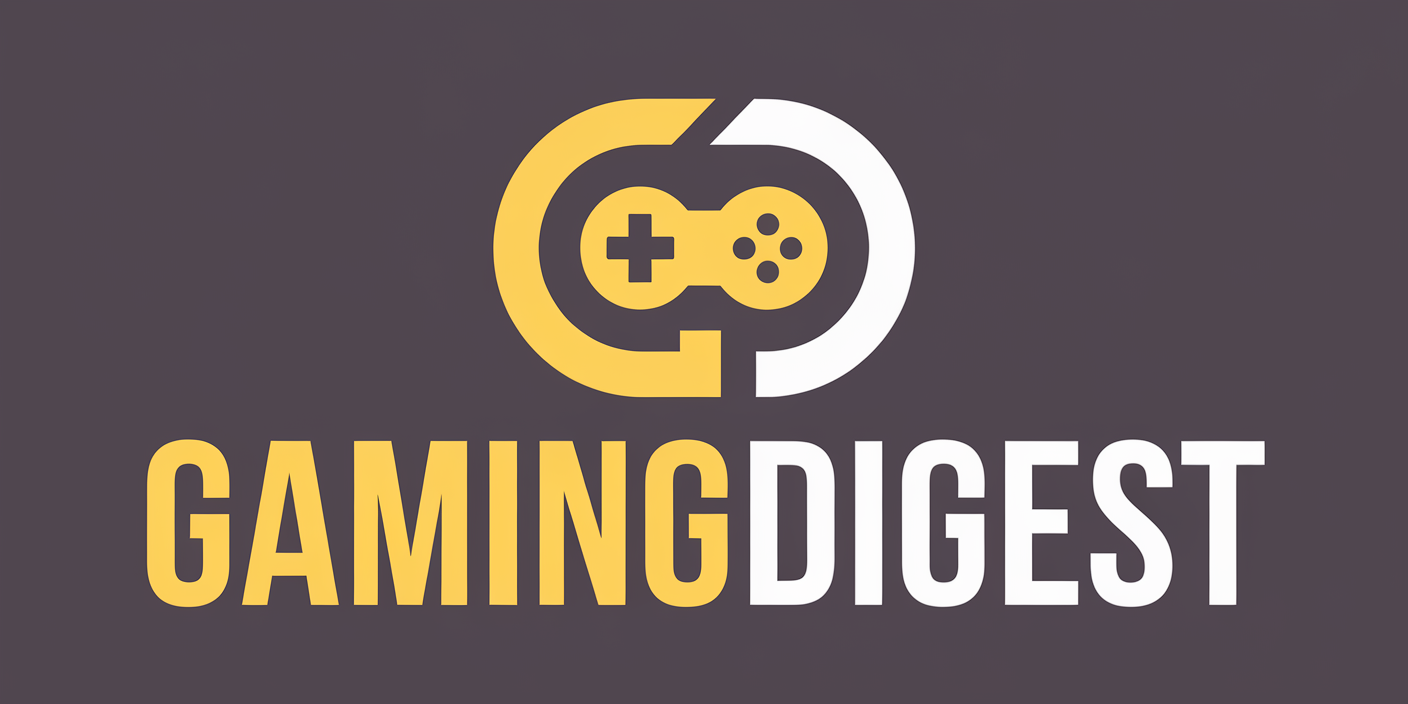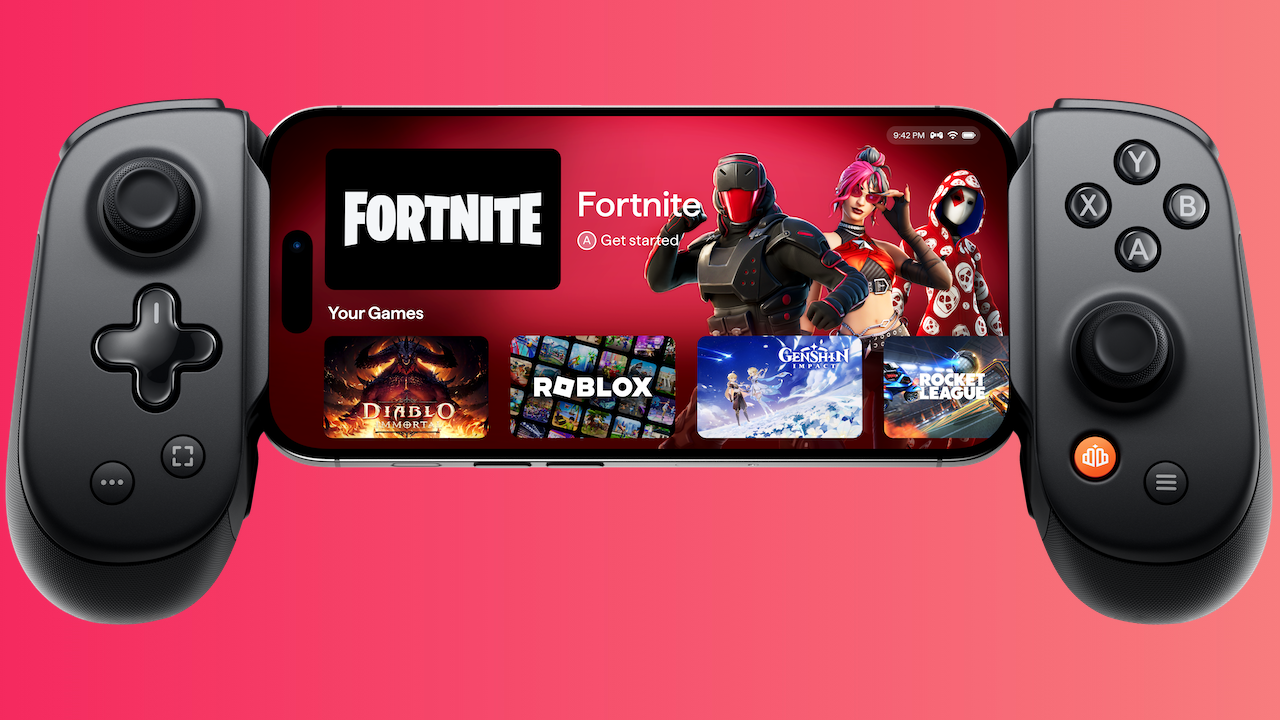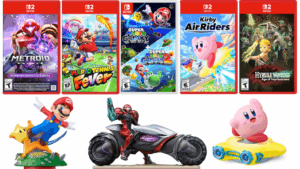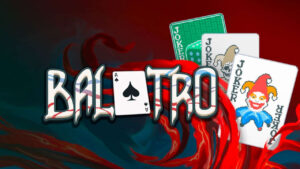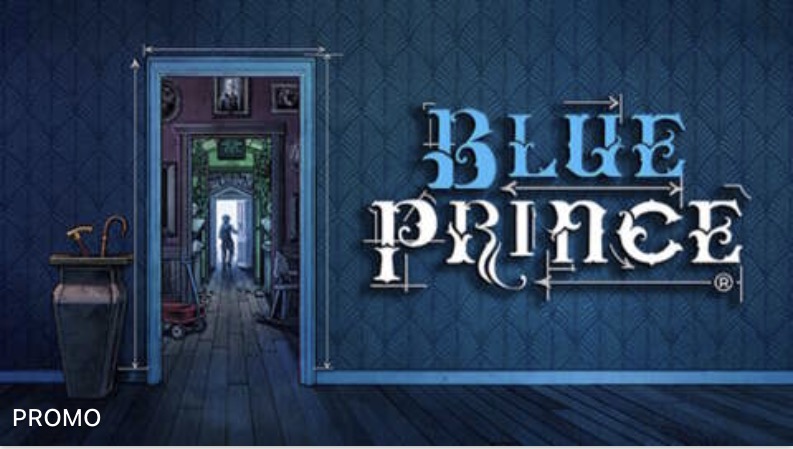The Backbone One has been the most popular dedicated controller for mobile gaming for several years now. Outside of minor Gen 2 revision that added support for phone cases, the Backbone is the same reliable controller today as it was when it launched in 2020. But starting today, you can choose between the Backbone One and the Backbone Pro.
The Backbone Pro takes cues from other pro-style controllers by adding a pair of back buttons and customization options designed to give players the freedom to fine-tune to the experience to fit their preferences. The Backbone Pro retains its USB-C connection for iPhone 15/16 and Android phones, but you can also use it as a wireless Bluetooth controller on tablets, PC, Mac, Steam Deck, and more devices. The Backbone Pro is available now for $170 exclusively at Best Buy and the Backbone online storefront. While the Backbone One is available in PlayStation (white) and Xbox (black) editions with USB-C or Lightning connections, the Pro is only offered in black with USB-C.
I’ve been using the Backbone Pro for the past week and am quite impressed by the hardware and software improvements. The Backbone One was and still is a great mobile controller–it’s at the top of our phone controller best list (for now)–but the Backbone Pro offers a marked improvement in ergonomics, customization, and integration with the excellent dashboard and game launcher app.
$170
Here’s a quick rundown of the Backbone Pro’s technical specifications as well as its design changes.
Key Features & Updates:
- Platforms:
- iPhone 15/16 and Android phones via USB-C
- Bluetooth wireless for PC, Mac, Steam Deck, tablets, VR headsets, and other devices
- Additional Ports:
- USB-C passthrough for charging phone
- 3.5mm audio jack
- Design:
- Larger handles with textured finish
- Full-sized ALPS analog sticks (not Hall Effect)
- Concave stick caps
- Anti-friction rings
- Hall Effect triggers with textured grips
- Two remappable back buttons (M1 and M2)
- Quieter “carbon-pill” face buttons and D-pad (glossy finish)
- Backbone App integration:
- Remap all inputs inside the app
- Adjustable trigger and stick sensitivity
- Create trigger and stick deadzones
- Custom profiles for each game
- Built-in emulator for NES, SNES, GB, GBC, GBA
- Smart Search helps you find games
- Launch all compatible games installed on your device
- Remote play Steam, Xbox, and PlayStation libraries
- Launch cloud gaming subscription services
- Built-in support for Apple Arcade (iOS) and Google Play Pass (Android), and Netflix Games
Backbone says it spent three years designing the new premium controller. That process included dozens of user studies and thousands of component iterations geared toward finding the most comfortable controller for as many players as possible. Ergonomics are subjective, but the difference between the Backbone Pro and Backbone One is immediately noticeable. The Pro model is by no means bulky, but the more rounded, chunkier handles feel more natural.
The redesign is especially beneficial for longer play sessions. If you, like me, find the Backbone One to be somewhat uncomfortable when playing for longer than 30 minutes to an hour, the Pro’s form factor is much friendlier in this regard. It caters better to those with larger hands without sacrificing the compact design that many people love. My four-year-old son tested the Backbone Pro with several Apple Arcade games without any issues with the larger size.
When I picked up the Backbone Pro for the first time, my ring fingers rested naturally on the M1 and M2 back buttons. Depending on your hand size and how you hold the controller, it might be more natural for you to use your middle fingers instead. Back buttons are no longer novel features like they once were, but it’s a meaningful addition nonetheless.
The presence of back buttons spurred a substantial improvement within the Backbone App. If you want to remap your controls on the Backbone One on iPhone, you have to exit the app and use Apple’s dedicated game controller settings menu. On Android, the only official option is Backbone’s TouchSync feature, which is restricted to Backbone+ subscribers. Thankfully, the Backbone Pro supports input customization within the official app. You can quickly set up as many custom profiles as you want, remap buttons, adjust trigger and stick sensitivity, and create deadzones for both.
Speaking of the sticks and triggers, it’s worth reiterating that while the Backbone Pro has Hall Effect triggers, it does not have Hall Effect sticks. The Backbone Pro’s full-sized sticks are certainly nicer than the shorter ones found in the original. They offer a smooth range of motion and feel precise, but these are still ALPS sticks. Though ALPS remains the most widely used analog stick technology–Nintendo, Microsoft, and Sony all use it in their controllers–ALPS sticks are susceptible to drifting issues. The anti-friction thumbstick ring should act as an extra layer of protection, but it’s still disappointing that a $170 pro-style controller doesn’t have Hall Effect sticks.

Like the original, the Backbone Pro’s greatest asset is its ability to turn your phone into a Switch-like gaming handheld. The ability to use the Backbone Pro as a wireless controller for other devices via Bluetooth is an interesting bonus. I tested the Backbone Pro on my PC, MacBook, iPad, Steam Deck, and Meta Quest 3S. From a pure performance perspective, the Backbone Pro works well as a wireless controller. The app remembers your devices, and you can swap between them almost instantly. Customization and game-specific profile support could make using the controller as a traditional gamepad enticing for some. As an Apple Arcade subscriber, it’s neat to have control profiles that can be used for the same game across iPhone, iPad, and Mac
If you already have a pro-style wireless controller for PC and mobile, the Backbone Pro probably won’t replace that. Without a phone attached, it feels a bit too light as a standalone wireless controller. Plus, if you’re like me, you might have a hard time getting past the visual aesthetic of the Backbone Pro without a phone between each half.
At $170, the Backbone Pro is one of the most expensive dedicated mobile controllers around. It’s $70 more than the Backbone One ($100) and $20 more than the Razer Kishi Ultra, a high-end mobile controller that released last year. For Android users, it sounds even more expensive when you consider that the 8BitDo Ultimate Mobile Controller costs $50 and is equipped with Hall Effect sticks/triggers and back buttons. But Backbone’s mobile gaming experience remains unmatched thanks to the Backbone App, and the Pro takes notable strides forward in software utilization.
If you use your Backbone One at least a few times each week, you will likely appreciate the Pro’s upgrades. And if you’ve avoided the Backbone One purely because you thought it was too small, you should give the new Pro model a look.
Existing Backbone users can also take advantage of one of the most exciting new features in the Backbone App: a built-in emulator on iOS and Android for NES, SNES, and Game Boy games (GB, GBC, and GBA). It’s currently in beta, but I tested homebrew games for each platform and found the experience to be as smooth as other retro emulators on iOS.

Backbone provided GameSpot with a pre-launch sample for testing.
